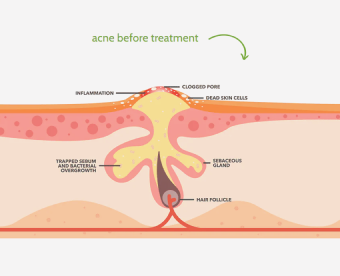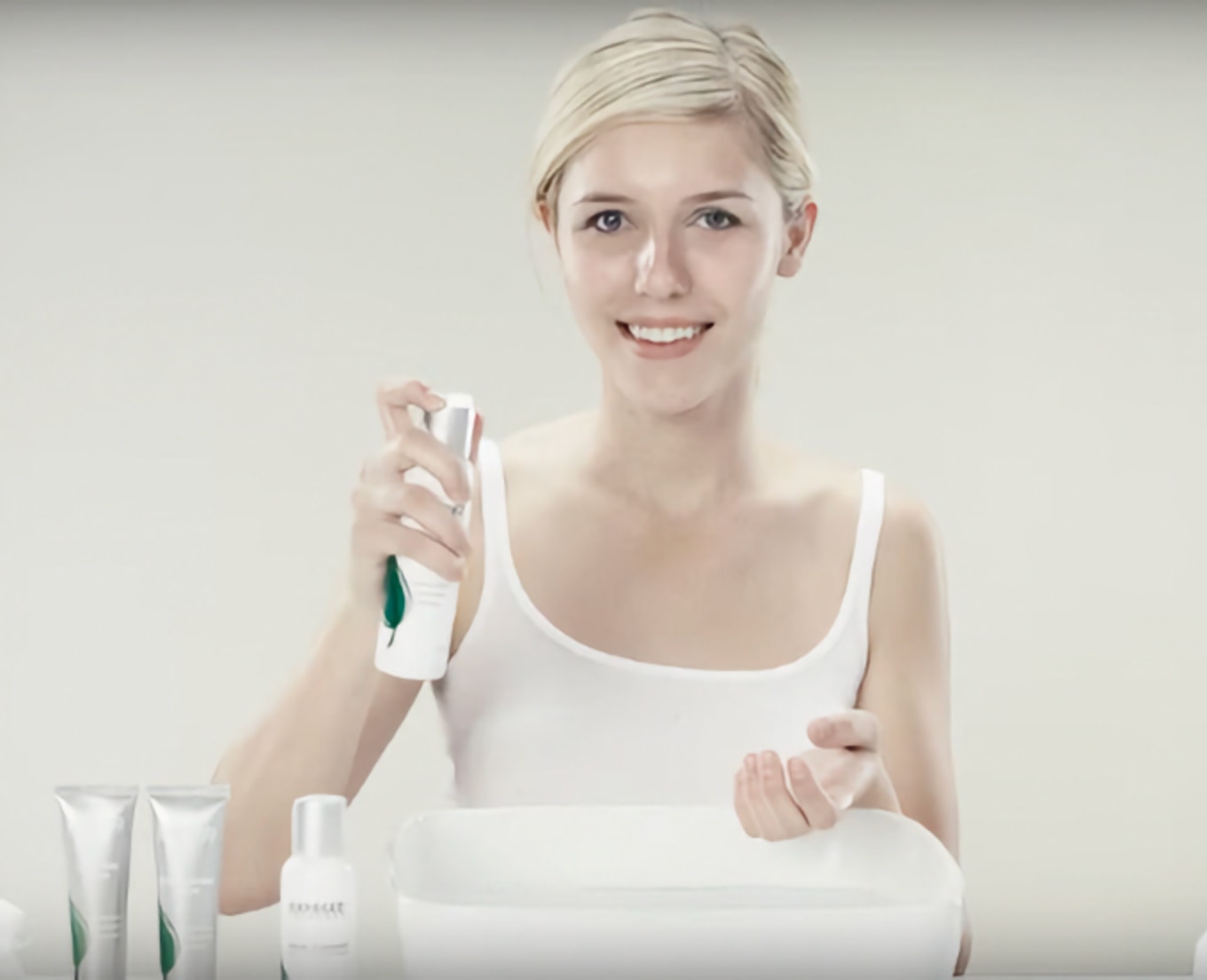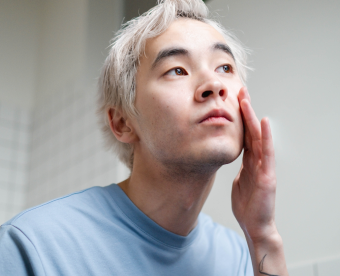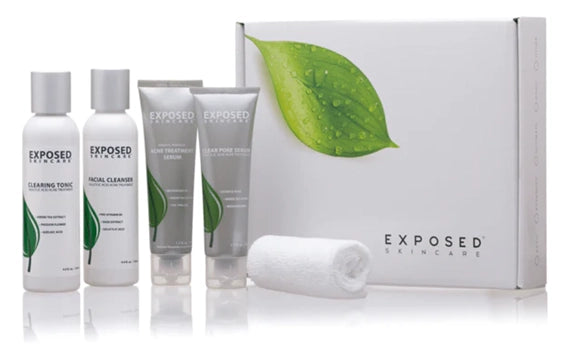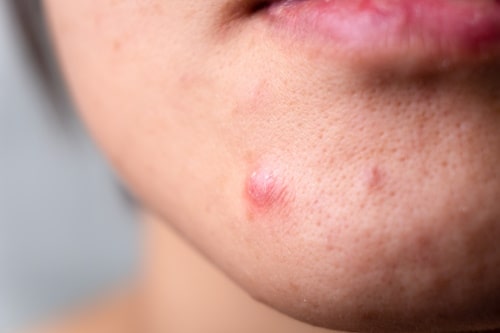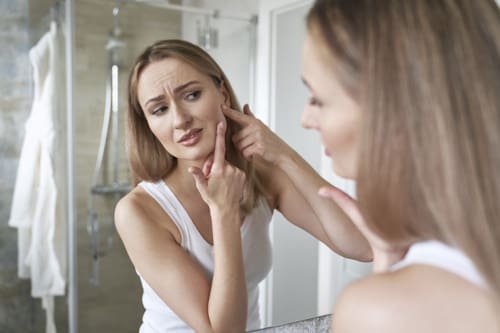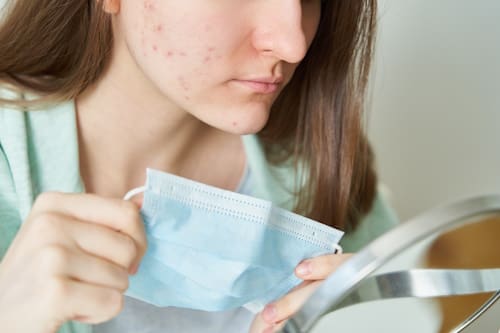It's happened to all of us at one point or another - those pesky pimples that pop up in the eyebrow area. Eyebrow acne is a common problem, but it often gets overlooked in general discussions on acne.
This article will focus on this area and unravel the mystery behind acne between eyebrows. We will take you through the causes of these unwanted visitors, explain why they are often painful, and present practical steps to manage and prevent them. Let's begin our journey on understanding and managing eyebrow acne.
Also read: How to choose the best acne treatment
Biggest Take-Aways:
-
Eyebrow acne is primarily caused by clogged pores, excess sebum, and dead skin cells; factors like hair removal and dirty makeup brushes can exacerbate it.
-
Blind pimples and hard lumps above the eyebrow can be dealt with using treatments like benzoyl peroxide, salicylic acid, and warm compresses while avoiding pimple extractions to prevent scarring.
-
Preventive measures for eyebrow acne include regular cleansing, exfoliation, the use of non-comedogenic makeup, regular cleaning of makeup brushes, maintaining hydration and a balanced diet, and avoiding touching the face.
-
Exposed Skin Care products can effectively manage acne by controlling sebum production, offering anti-inflammatory properties, providing an alternative to prescription medications, protecting skin from styling products, and preventing pimples.

Understanding Eyebrow Acne
What Causes Acne on Eyebrows?
Eyebrow acne is primarily the result of clogged pores. Each of your pores is an opening to a follicle. Each follicle comprises a hair and an oil gland. When these oil glands produce excess sebum, an oily substance that keeps your skin hydrated, it can mix with dead skin cells and get trapped in the pore.
Dead skin cells, excess oil, or sebum lipids can clog pores. Once these substances have clogged a pore, they may form a plug. This plug becomes a breeding ground for acne-causing bacteria, leading to the formation of acne. The brow line is no exception to this process, and the hair follicles in this region are just as prone to trapping dead skin cells and developing eyebrow acne.
Also, your hair plays a role in carrying dead skin cells. When the hair inside a follicle grows out and bends towards the skin's surface, it can trap dead skin cells, resulting in ingrown hairs and thus causing eyebrow pimples.
Why are Eyebrow Pimples so Painful?
The skin around your eyebrows is thinner and more sensitive than other parts of your face. When acne forms here, the body's immune response is triggered, causing inflammation and swelling. This, in turn, leads to pressure being built in the deeper layers of the skin, making the acne between your eyebrows particularly painful.
What Factors Aggravate Eyebrow Acne?
A range of factors can contribute to worse acne in your eyebrow area:
-
Hair removal: Techniques such as threading, waxing, or using a hair removal cream can lead to mild skin irritation, contributing to the development of eyebrow acne.
-
Oily skin: Overactive sebaceous glands producing more sebum can lead to oily skin, clogging pores, and acne.
-
Makeup and styling products: Dirty makeup brushes, eyebrow pencils, or even your favorite hair products can transfer bacteria to your skin and clog oil glands, leading to acne.
-
Emotional stress: Increased stress levels can stimulate more sebum production, which can worsen acne.
-
Poor dietary habits: A diet high in processed foods can cause liver stress, producing more toxic blood material that may exacerbate acne.

Managing and Preventing Eyebrow Acne
How Do You Get Rid of Blind Pimples?
Blind pimples are acne that has developed beneath the skin's surface. Unlike blackheads or whiteheads that occur on the skin's surface, these do not have a visible head. They are often seen as pink bumps on the skin and can be painful due to inflammation.
Treatments for blind pimples include:
-
Benzoyl peroxide: An over-the-counter remedy, benzoyl peroxide, can kill acne-causing bacteria, reducing inflammation and opening up your pores.
-
Salicylic acid: This ingredient helps to remove dead skin cells, reduces inflammation, and can unclog pores, helping to treat acne.
-
Warm compress: Applying a warm compress can help to bring the pimple to the skin's surface and speed up its healing.
Remember, resisting the urge for pimple extractions is important as it can lead to worse acne and even scarring.
Why Do I Have a Hard Lump Above My Eyebrow?
A hard lump above your eyebrow could be due to severe acne, also known as a cystic pimple. This type of acne occurs when bacteria grows deep inside your hair follicles, leading to a large, inflamed bump. In case of severe or persistent acne, it might be beneficial to consult a board-certified dermatologist who can suggest suitable treatment options.
How to Prevent Eyebrow Acne
Eyebrow acne can indeed be frustrating, but following a few preventive measures can help you keep acne at bay:
-
Regularly cleanse: Make sure to clean your skin thoroughly every day, especially after a workout or any activity that causes you to sweat. Sweat can clog pores, leading to acne.

-
Exfoliate: Exfoliating your skin can help remove dead skin cells, preventing clogged pores. Ensure not to over-exfoliate, as it can strip your skin of natural oils.
-
Use non-comedogenic makeup: Non-comedogenic makeup is specially designed not to clog pores, reducing the chances of developing acne.
-
Clean your makeup brushes regularly: Dirty makeup brushes can harbor bacteria, which can transfer to your skin when you use them, contributing to acne development.
-
Stay hydrated and maintain a balanced diet: Keeping your body hydrated and maintaining a healthy diet can enhance your skin health and prevent acne.
-
Avoid touching your face: Our hands carry a lot of bacteria from the things we touch. Regularly touching your face can transfer bacteria, leading to the formation of acne.
Benefits of Exposed Skin Care in Managing Acne
Exposed Skin Care products offer an efficient way to manage acne, thanks to their unique formula combining natural extracts and scientifically-backed ingredients.
Let's take a look at some of the benefits of using Exposed Skin Care:
-
Control Sebum Production: Exposed Skin Care products effectively manage too much sebum, a major contributor to acne. They help balance your skin's oil production, preventing an overload of sebum that can clog pores.
-
Anti-Inflammatory Properties: The range includes ingredients with anti-inflammatory properties, significantly reducing the redness and swelling associated with acne.
-
Non-Prescriptive: These products offer a competitive alternative to prescription medications, making it easier for individuals dealing with skin conditions such as acne to access effective solutions without medical consultations.
-
Pimple Prevention: With regular use, Exposed Skin Care can help prevent pimples, promoting a clearer and healthier complexion. The combination of scientific and natural ingredients works to target acne-causing factors, ensuring your skin stays smooth and acne-free.
By incorporating Exposed Skin Care into your routine, you can actively manage your acne and improve your skin's overall health.
Conclusion
Dealing with eyebrow acne requires a comprehensive understanding of its root causes, maintaining consistent skincare habits, and making lifestyle adjustments. Cleanliness is key — keep your skin and makeup brushes free of bacteria and excess oil.
Choosing non-comedogenic makeup and skincare products is vital to prevent pore clogging. Proper diet and hydration further contribute to skin health, minimizing acne outbreaks.
Exposed Skin Care products are an effective ally in this journey, helping manage sebum production, reducing inflammation, and providing a protective barrier against potential skin-damaging elements. Despite the annoyance of eyebrow acne, rest assured that prevention and effective management are possible with the right knowledge and tools.
FAQs on Eyebrow Acne
Q1: Can hair removal cause acne between my eyebrows?
Yes, hair removal can cause mild skin irritation, leading to acne between your eyebrows. It's important to take care of your skin post-hair removal. You can apply a soothing gel to prevent ingrown hairs and calm your skin.
Q2: Is my oily skin causing more acne on my eyebrows?
Yes, oily skin is more prone to acne as excess oil can clog your pores, leading to the formation of acne. It's important to follow a skincare routine suitable for oily skin.
Q3: Is it safe to extract pimples between my eyebrows?
No, pimple extractions should be avoided as they can cause scarring and even lead to worse acne. Letting the pimple heal naturally is best or using appropriate skincare products to expedite the process.
Q4: How do I know if I have severe or persistent acne?
If you have large, inflamed bumps that are painful and don't seem to heal with over-the-counter remedies, you might have severe or persistent acne. In such cases, a consultation with a board-certified dermatologist might be beneficial.

